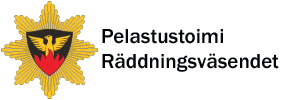

Fireplaces and heating
A fireplace is safe to use if it is in good condition and you know how it works
Always get to know a fireplace's features and read its instructions for use before you light a fire. Then you can enjoy the heat and the atmosphere of a real fire. Modern fireplaces are safe and also easy to use. Hazardous situations are usually caused by lack of knowledge and understanding and using the fireplace incorrectly.
Keep your fireplace in good condition.
Before lighting a fire
If you have not lit a fire in this fireplace before, see the instructions if possible. If not, could you call someone who can tell you what to do? If you are still unsure, consider if you really need to light a fire, for example for heat. Lighting a fire may result in major smoke and soot damage. In the worst case, you may cause a house fire.
Basic instructions for lighting a fire and heating the house
Remember to open all the dampers before starting. In addition to a flue damper, modern fireplaces often have an ignition damper, which should be open when you light the fire. Once the fire is burning steadily, you close the ignition damper. Combustion gases circulate inside the fireplace, building up heat efficiently. These are called heat-storing fireplaces. Conventional ‘open fires’ usually only have one damper, and the combustion gases (and part of the heat) go directly out of the chimney.
The dampers are open but smoke keeps coming in
Have the fireplace and its flue not been used for some time? In this case, the flue may be damp and cold, there is no draught, and the smoke comes in. A flue and a fireplace that have been unused for more than three years must be swept before use. You should always consider carefully before using a fireplace. Unless you have a lot of experience and you know the fireplace, do not light a fire! You may cause major smoke damage, as a cold and damp flue must usually be warmed first.
Warming the flue and fireplace
- Burn a small amount of paper in the ash pit of the fireplace or the soot door of the flue, for example a few pages of a newspaper crumbled up slightly. This removes the seal formed by moisture/cold in the flue and it should start working again.
- When lighting the fire for the first time, only use a small amount of dry wood that burns well. It is always a good idea to start heating a fireplace slowly, as sudden changes of temperature could damage it. If you use the fireplace often, you can light it normally and as needed to produce heat.
- Oxygen (air) is needed for burning. If there is no draught in the fireplace even if the flue has been used recently, replacement air (draught) is required to light a fire. You can open a door or a ventilation window to produce sufficient draught to light the fire. Please note! Before you start to light a fire, find out if the extractor fan can be used at the same time as the fireplace.
- Only use dry firewood that burns well with a good draught in the flue, and remember that fireplaces are not designed for burning waste. Burning rubbish and waste builds up soot in the chimney and may produce combustion residues that are harmful for the environment. Dump your rubbish with mixed waste.
- Heat the fireplace moderately. Remember this especially when using a heat-storing fireplace, which could be damaged by too much heating. The basic rule is that you burn no more than two to three fills of the firebox a day.
- Only close the flue damper when the fire chamber is COMPLETELY DARK! Stir the coals with a poker or similar. Do not close the flue damper if you can see flames or glowing coals in the firebox. Forget about what people used to say about wasting heat if you do not close the damper. Modern fireplaces are reliable and advanced heat sources that are safe to use. This is why you should not rush to close the damper!
- When you get a fireplace, also buy a carbon monoxide alarm – in addition to a smoke detector, of course. Carbon monoxide is a toxic gas with no smell or taste. If you are asleep, it is unlikely to wake you up. If you have a fireplace, you must also have a carbon monoxide alarm as a safety device.
- The owner and occupant of a building are responsible for the sweeping of its fireplaces. Have the fireplaces swept regularly. Fireplaces which are used continuously round the year and their flues must be swept every year by an authorised chimney sweep. All fireplaces and flues of a private holiday home mainly used for part of the year (such as a summer cottage) should be swept every three years. If a holiday home is intended for renting or other similar uses and used regularly, its chimneys and flues should be swept once a year.
The greatest risks when using a fireplace are a house fire and carbon monoxide poisoning.
Fireplaces and flues must be swept and their condition must be checked in order to ensure that the build-up of combustion and other residues does not cause a fire hazard. Fire safety instructions, such as safety distances, should be already taken into account when designing a fireplace. The fireplace should be acquired and installed by professionals.

A chimney cap effectively prevents rainwater from flowing down the flues and into the foundations. Sweeping significantly prevents chimney fires. For more information on chimney sweeping, contact your local chimney sweep, rescue services and fireplace manufacturers.
Read more:
Chimney Sweeping, Finlex in Finnish
Chimney sweeping


